SXSW
SXSW 2013: Peter Hall and John Gholson, Critics Being Critiqued (Part One)
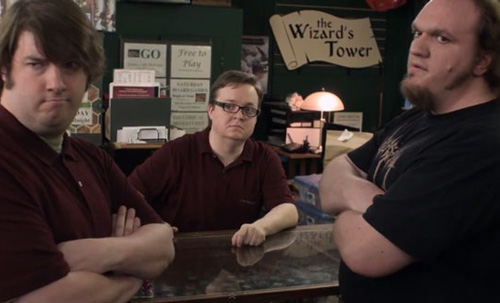
By John Gholson
[Editor's note: Please welcome local film writers John Gholson and Peter Hall to Slackerwood. Gholson decided to interview Hall about what happens when film bloggers (and critics, journalists, columnists, etc.) move into filmmaking, since they were both involved in SXSW films this year. This is an issue that affected Slackerwood this year, too, so I'm pleased to present this conversation to you. It's long and in two parts, but fascinating and worth the time to read all the way through.]
It was an unusual year for some movie bloggers at SXSW. Peter Hall, an editor at Movies.com, produced Emily Hagins' Grow Up, Tony Phillips, a film that made it into the fest (and one that features appearances by movie bloggers Brian Salisbury, J.C. De Leon and Scott Weinberg), and I, a writer at Movies.com, have a role in Zero Charisma, a film that went on to win the Narrative Spotlight audience award at the fest. It was a year where we went beyond our typical coverage of the festival, to having a personal stake in the reception of the films that played.
For us, it's been a slow and natural evolution, but for readers, does the involvement of bloggers in the filmmaking process begin to color both professions in a negative light? During SXSW, one acquaintance insinuated that the film I was involved with got a great review from a certain website because the company doing the PR for the film was also handling the PR for the website where that positive review ran. Now, I know that wasn't the case -- no one was doing anything corrupt -- but it's a common perception that's worth discussing. What are the obligations a film blogger has, in their relationship with filmmaking, and how should our readers perceive these relationships, especially since the line continues to blur on a daily basis?
I sat down with Peter Hall after SXSW to discuss the question and our experiences, being bloggers who are now involved in the other side of the moviemaking process.
SXSW Review: Zero Charisma
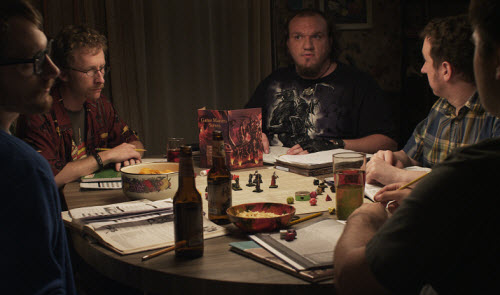
The Austin-shot movie Zero Charisma may be as close as we ever get to a cinematic adaptation of A Confederacy of Dunces. Scott Weidemeier, as portrayed by Sam Eidson, bears a strong resemblance to a contemporary Ignatius J. Reilly, if Ignatius were transplanted to a lesser city than New Orleans and had been introduced to role-playing games like Dungeons and Dragons. (Which leads me to ponder an Ignatius-approved RPG set in the time of Boethius, but I digress.)
What makes Zero Charisma so watchable is that Eidson and filmmakers Katie Graham and Andrew Matthews lead us to sympathize with a character as appalling and unlikeable as Ignatius would be, if we encountered him in real life. Scott is living with his grandmother in a glorious Fifties time capsule of a bungalow (with decor that would close Ignatius's valve), working as a delivery boy for the Donut Taco Palace, and in the rest of his spare time, creating and playing his own D&D-like role-playing game in which, naturally, he is the Game Master.
Scott's life is pretty routine until Fortuna spins her wheel and two horrible things happen: one of his regular RPG players drops out of the years-long game, and his grandmother suffers a stroke that brings Sam's mother (Cyndi Williams) and her husband back in town and invading Scott's sanctuary. He finds a new player, Miles (Garrett Graham), but Miles turns out to be a rival for the attention and perhaps allegiance of Scott's regular players.
SXSW Review: Grow Up, Tony Phillips
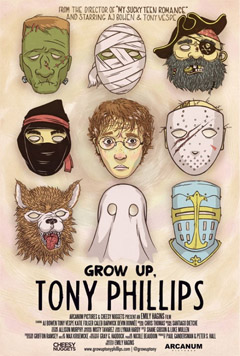 Grow Up, Tony Phillips, the new comedy from Emily Hagins, made its world premiere at SXSW last week, in the Vimeo Theater of the Austin Convention Center. The audience was eager and excited to see the latest project by this young Austin-based director.
Grow Up, Tony Phillips, the new comedy from Emily Hagins, made its world premiere at SXSW last week, in the Vimeo Theater of the Austin Convention Center. The audience was eager and excited to see the latest project by this young Austin-based director.
Tony Phillips (Hagins film regular Tony Vespe) is an easygoing senior in high school who still dresses up for Halloween and loves trick-or-treating. He spends his fall months thinking up costume ideas, even sketching concepts in his college prep class. He tells his mom that he sees these costumes as his "legacy."
His two closest pals are cool kid Craig (Devin Bonnee, another Hagins regular) and Elle (Katie Folger, also in Zero Charisma); both attempt to get Tony to get past this fascination with October 31. In one discussion with Tony, Elle comments, "You don't really worry about anything, do you?" They have their own reasons for worrying about Tony. Craig is falling in with the popular kids and Tony embarrasses him. Elle fears that kids at their school will laugh at her friend.
Tony also has a much younger friend/babysitting charge Mikey (Caleb Barwick, Army Wives) who looks up to him, and an older cousin Pete (AJ Bowen, You're Next) whom Tony himself esteems. As time passes in the film, we see how Tony's interactions with these four characters help him discover more about himself.
During the Q&A afterwards, Hagins said that she doesn't care to define the time or location of the movie. I easily figured out it was Austin, however, as soon as I saw a scene filmed in a familiar courtyard at my old high school (Johnston, RIP). The set design is punchy (Tony has a poster for fictitious movie Space Hipster in his room) and fully establishes us in the season of autumn starting with the cute opening credits sequence.
Some Austin character actors appear later in Grow Up, Tony Phillips to provide more laughs -- Byron Brown, especially. This saves the film from a slight dragginess. Although, honestly, the seats at the Vimeo Theater were so awfully uncomfortable that it may have just felt like the movie slowed down towards the end.
The kids in this film come off as genuine, awkward humor and all. There's not a whole lot of depth to Grow Up, Tony Phillips, but does there need to be? The film is cute and charming. It's refreshing to see a coming-of-age story wherein teenage characters remain true to themselves.
SXSW Review: The Act of Killing
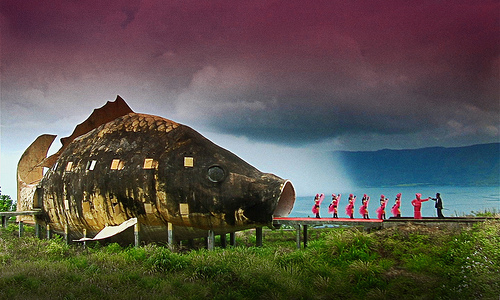
You take a mortal man, and put him in control. Watch him become a god, watch people's heads a’roll.
--Opening lyrics to Megadeth's "Symphony Of Destruction"
The above lyrics are the first thing that came to mind immediately after watching the unique and disturbing documentary The Act of Killing. This movie provides a terrifying glimpse into the minds of people that commit genocide.
The Act of Killing is one of the most unique documentaries ever filmed. Director Joshua Oppenheimer somehow convinced numerous gangsters, paramilitary leaders, thugs and politicians to create cinematic re-enactments of their experiences during the military coup that occurred in the country of Indonesia in 1965-66. This coup resulted in the mass execution of nearly half a million people who were members of, or accused of being members of, the Indonesian Communist Party.
SXSW Review: Swim Little Fish Swim
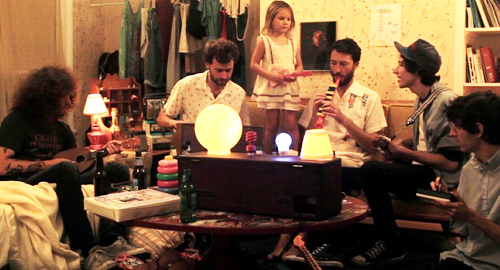
Anyone pursuing a career in the arts will appreciate Swim Little Fish Swim, a film about the perennial battle between art and commerce, between dreams of success and the unkind reality that shatters those dreams.
An engaging and appealing movie by French filmmakers Ruben Amar and Lola Bessis, Swim Little Fish Swim is the story of Leeward (Dustin Guy Defa) and Mary (Brooke Bloom), a struggling young couple living in a tiny Chinatown apartment with their three-year-old daughter, Maggie (Olivia Costello) -- or "Rainbow," as her always creative father prefers to call her.
That Leeward and Mary cannot agree on what to call their daughter speaks volumes about their troubled relationship. A talented musician, Leeward considers himself a misunderstood artist and refuses to accept paid gigs for The Man, fearing they will stifle his creativity. (He won't even record a CD of his songs; that would be much too mainstream.) He's also a self-styled New Age visionary who opposes most forms of capitalism and consumerism, much to the annoyance of Mary, a sensible, hardworking nurse who wishes her husband would grow up, face the responsibilities of adulthood and help her pay the bills.
SXSW Review: Big Joy: The Adventures of James Broughton
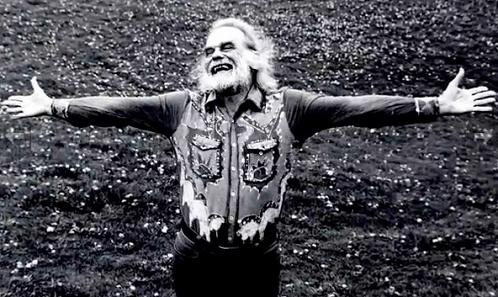
James Broughton's epitaph says about all you need to know about him: Adventure -- not predicament.
For those who want to know more, the splendid documentary Big Joy: The Adventures of James Broughton is a terrific tribute to the revered poet, writer and pioneering experimental filmmaker.
Born in 1913, Broughton overcame a difficult childhood to have a long, fulfilling career and personal life. His father died when Broughton was five, and his overbearing mother sent him to military school at age 9, hoping to break him of his effeminate tendencies. These experiences no doubt informed his work and his lust for life and love as an adult.
He began making experimental short films in New York in the 1940s and made 23 in total, all deeply personal and many featuring groundbreaking themes and copious nudity, which was largely forbidden during his early career. (One of his best-known films, the award-winning 1967 fantasy romp The Bed, is perhaps the nudest film of its era. It played in a San Francisco theater for more than a year.)
SXSW 2013 Photos: 'Sake-Bomb' Premiere
I had planned to see the dark foreign film The Five Seasons at the Violet Crown on opening night, but was easily convinced by my friend Anna Hanks to try Sake-Bomb instead. The light cross-cultural road-trip comedy was just what I needed after the intense Upstream Color screening. Sake-Bomb was filmed in both Japan and California, and follows sake factory employee Naoto (Gaku Hamada) as he visits his uncle and cousin Sebastian (Eugene Kim) in L.A. and tries to find the woman who broke his heart (and lives in Petaluma).
Director Junya Sakino introduced the film, and since it was the movie's world premiere, some cast members were in attendance as well. I was in theatre 4 during the screening, and we watched the live feed from theatre 3. When it started, we actually worried we'd be watching the film via the live feed as well, but they then switched it on for our screen.
SXSW Review: All The Labor
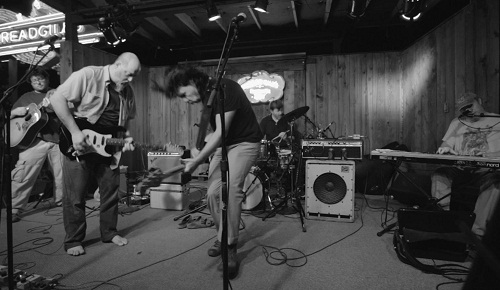 With ten albums over almost 20 years, the Austin band The Gourds has been well established on the local scene with their raucous live performances. Kevin Russell formed the band in 1994 with fellow songwriter Jimmy Smith, and Claude Bernard on accordion, guitar and keyboards -- Keith Langford later joined the band on drums. It was the viral sensation of their cover of "Gin and Juice" that garnered them national attention, and has become their band's version of "Freebird" as the most requested song. Longtime fans of the band know that the magic of The Gourds truly comes from the communal live experience, whether witnessed at a jam-packed Thursday night show at Shady Grove or the memorable SXSW 2005 free show at Auditorium Shores with a sea of over 20,000 people.
With ten albums over almost 20 years, the Austin band The Gourds has been well established on the local scene with their raucous live performances. Kevin Russell formed the band in 1994 with fellow songwriter Jimmy Smith, and Claude Bernard on accordion, guitar and keyboards -- Keith Langford later joined the band on drums. It was the viral sensation of their cover of "Gin and Juice" that garnered them national attention, and has become their band's version of "Freebird" as the most requested song. Longtime fans of the band know that the magic of The Gourds truly comes from the communal live experience, whether witnessed at a jam-packed Thursday night show at Shady Grove or the memorable SXSW 2005 free show at Auditorium Shores with a sea of over 20,000 people.
Director and editor Doug Hawes-Davis captures the beloved band in his documentary, All The Labor, which premiered last night at SXSW 2013. Founder of the annual Big Sky Documentary Film Festival in Missoula, Montana, Hawe-Davis is no stranger to documentary filmmaking, having collaborated with editor Drury Gunn Carr on more than 30 documentaries.
They began filming The Gourds in August 2011. in an unconventional practice space -- an abandoned kitchen in a former mental institution in south Austin. The filmmaking team followed the alt-country roots rockers as they toured relentlessly in support of Old Mad Joy, their most recent album produced by longtime Bob Dylan sideman Larry Campbell. Interspersed is commentary with each of the members and behind-the-scenes footage in their favorite local spots and homes.
SXSW Dispatch: 'An Unreal Dream' at Alamo Village
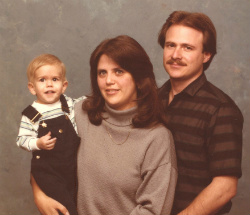 I took it somewhat easy on Wednesday and just went to one film: the 6:30 pm showing of An Unreal Dream: The Michael Morton Story at Alamo Drafthouse Village. As I drove up at 5:40, the line for tickets was already out the door. There's definitely local interest in Morton's situation, as well as the resulting documentary.
I took it somewhat easy on Wednesday and just went to one film: the 6:30 pm showing of An Unreal Dream: The Michael Morton Story at Alamo Drafthouse Village. As I drove up at 5:40, the line for tickets was already out the door. There's definitely local interest in Morton's situation, as well as the resulting documentary.
Once I got in and was snacking on my chips and queso, I spotted Morton himself walking around and being introduced to folks in the audience. Producer Marcy Garriott spoke before the film and mentioned special guests in attendance for the Q&A afterwards; I surmised Morton was likely one of them.
The film itself largely consists of interviews recorded at the Williamson County Courthouse. Morton sits in a wooden chair below the judge's dais in an empty courtroom and talks about his relationships with his wife Chris and his son Eric, and his wrongful conviction for Chris's 1986 murder. Vintage 1980s news clips are thrown in (oh hi, young Judy Maggio!) and Morton is shown leaving the courthouse after his conviction, defiantly saying, "I did not do this," to the reporters and cameras.
In An Unreal Dream, director Al Reinert includes interviews with Morton's trial lawyer, jurors from his trial, fellow inmates (from his 25-year period of incarceration in Texas prisons), and folks from the Innocence Project. Throughout the film, Morton's voice is the strongest (which is fitting, given it's his story).
I expected the film to be something like an episode of PBS's Frontline, but it is less journalistic and more emotional. The story as told in the film never really sucked me in, despite how fascinating it really is. Still, I heard much sniffing from others in the audience.
SXSW Review: The Other Shore
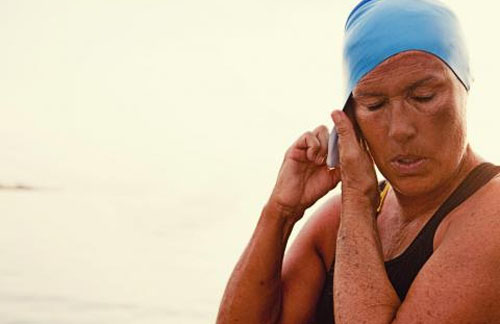
Please welcome guest contributor Brady Dial, an Austin-based film producer whose last film was the documentary Man on a Mission.
After seeing The Other Shore you'll either be inspired to pursue your most impossible dreams -- or to drop them in favor of fully appreciating your present. Either way, a win. There are many surprises in this documentary about Diana Nyad's attempt to swim the gulf between Cuba and Florida, not the least of which is this: it's not about swimming.
To be sure, the film includes plenty of training scenes, discussions of the perils of the trip and a history of Nyad's swimming career. But that's all merely icing on the dense layer cake that is Nyad herself. Her relentless pursuit of the Cuba-Florida swim is at once an inspiring story of dogged determination while also revealing the tragic costs of single-minded obsession.
At 60, after a 30-year hiatus from long-distance swimming, Nyad decides that she just can't let go of this one last goal. She starts training again for the grueling 103-mile swim from Cuba to Florida, fraught with perils including sharks, strong currents and the incredibly venomous box jellyfish. The scenes involving the latter are some the most harrowing moments of the film and a testament to Nyad's indomitable will.


